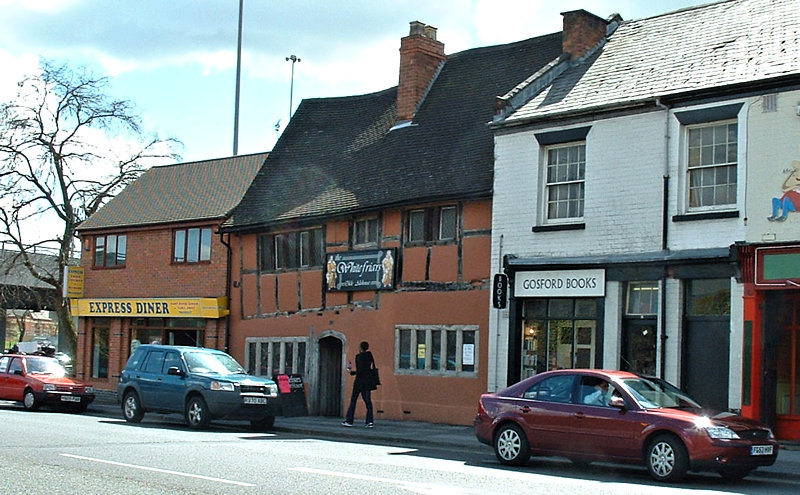 This was named after the nearby monastery, although there is no known connection between the two buildings.
When the building was the site of an archaeological dig in 1987,the remains of twelfth century ridge-and-furrow cultivation was found beneath. The furrows contained the hoof prints of the ox team that pulled the plough preserved in the heavy clay. This suggested that, in order to turn the ox teams at the end of the furrow, there could not have been any buildings, nor even a roadway at that time.
At the most there could only have been a footway or track down to Goose Ford at that time.
The present building has been dated to c1350 by tree-ring dating and by its cram post roof, whatever one of those is! It originally consisted of a two-bay hall, which subsequently had a floor inserted, creating two rooms, one upstairs, one down. Apparently this happened in the sixteenth century when chimneys were inserted to enclose the fire which until then would have sat in the middle of the hall and vented through the roof.
The building has not been over-restored and has a reputation for its authentic atmosphere.
This was named after the nearby monastery, although there is no known connection between the two buildings.
When the building was the site of an archaeological dig in 1987,the remains of twelfth century ridge-and-furrow cultivation was found beneath. The furrows contained the hoof prints of the ox team that pulled the plough preserved in the heavy clay. This suggested that, in order to turn the ox teams at the end of the furrow, there could not have been any buildings, nor even a roadway at that time.
At the most there could only have been a footway or track down to Goose Ford at that time.
The present building has been dated to c1350 by tree-ring dating and by its cram post roof, whatever one of those is! It originally consisted of a two-bay hall, which subsequently had a floor inserted, creating two rooms, one upstairs, one down. Apparently this happened in the sixteenth century when chimneys were inserted to enclose the fire which until then would have sat in the middle of the hall and vented through the roof.
The building has not been over-restored and has a reputation for its authentic atmosphere.
|